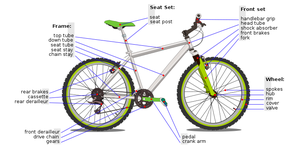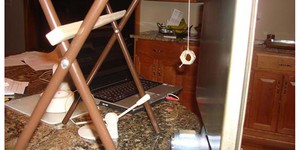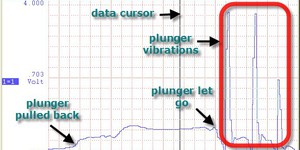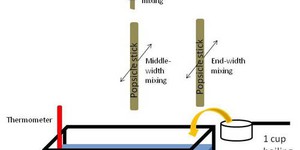Mechanical Engineering Science Projects (45 results)
If you're interested in object motion and enjoy building things or taking mechanical things apart to see how they work, then it sounds like you'd be interested in mechanical engineering.
|
Select a resource
Sort by
|
Are you into cycling and speed? Then this is the science fair project for you! In this science fair project, you will determine the best gear ratio for your bike, to get the highest speed after a curve and onto a straightaway. You will learn a lot about applied mechanics and gears, all while having fun riding your bike.
Read more
Featured
Have you heard that garlic powder is supposed to inhibit the growth of bacteria? Which do you think would make a better disinfectant: a solution of garlic powder or a solution of bleach? This project shows you a straightforward way to compare the effectiveness of different disinfectants (or other antimicrobial agents), by measuring zones of inhibition on a culture plate.
Read more
An overnight trip to the beach or a quick two-day vacation can be lots of fun. What do you do to prepare? Pack your clothes, get sunscreen lotion, and borrow a book from the library. But wait! Who is going to feed your dog or cat? It would be irresponsible to let them go hungry. And you can't just leave food out, because it can get stale and start to grow bacteria, which can cause your pet to get sick. Also, it is not a good idea to leave bowls of food out because a pet might overeat, which is…
Read more
Noise is everywhere. From the clanking of a cowbell to the din of the lunchroom, we are surrounded by noise. Sometimes there's no way to get away from it, but there is a way to deal with it—constrained-layer damping. By simply creating a layered sandwich of somewhat flexible materials, what was once a noisy cowbell can become a "noise blanket." This science fair project shows you how to transform a noisy piece of metal into a sound-muffling constrained-layer damper. You'll record the…
Read more
Whoopee! No matter what age, who doesn't like flying down the slides at parks and pools? In this experiment, you might be surprised what you can learn about the fascinating forces of friction while sliding down (or sticking to) those fun, slippery slopes. Caution: only speed demons need apply for this activity.
Read more
How many times have you heard from your parents: "Clean up your room!" or "Don't forget to unload the dishwasher!" By applying principles of industrial engineering and time management, you can speed through your chores and have more time to kick back and relax.
Read more
Have you ever set up a line of dominoes and watched them fall? If you wanted to make your line of dominoes fall faster, do you think you should set the dominoes up with more or less space between them? Set your dominoes up in a straight line, using a ruler to keep the spacing between them constant. Try different spacings at 0.5cm increments. Conduct multiple trials at each spacing, and time how long it takes for a fixed total length of dominoes to fall (e.g., a 1.5 or 3.0 meter length of…
Read more
When something goes wrong, do you like to try to figure out why? Engineers do this all the time. They even have a fancy name for it: failure analysis. Understanding how different materials break is an important part of failure analysis. Here's a project with one approach to studying the way things break.
Read more
Strike a key on the piano, and you hear the string vibrating. Just about any object vibrates when it's knocked, but how much and how fast? What properties of the material affect the way it vibrates? This project helps you find out. You'll build a simple light-sensing circuit for measuring the frequency of vibrating springs.
Read more
Big, puffy, cotton-like clouds, and the bubbles in a pot of boiling water may not seem like they have much in common, but they do—both are formed by a heat-transfer process called convection. Warmed gases and liquids rise, while cooler ones fall, creating currents and mixing things up. Whether making processed foods in a factory or making plastic or metal parts, knowing how to mix up a big tank of hot and cold liquids or gases quickly is important. Engineers must rely on experimentation…
Read more
How does ski wax affect the sliding friction of skis? You can model this with an ice cube sliding down a plank: how high do you need to lift the end of the plank before the ice cube starts to slide? Try this with one side plain wood and the flip side waxed wood (use paraffin wax, candle wax or ski wax). Make sure both sides are equally smooth to start with. Do at least three trials. More advanced: using what you know about the forces acting on the ice cube, derive equations to calculate the…
Read more
|
Explore Our Science Videos
Iteration in the Engineering Design Process
Dancing Robot
How to Make a Homopolar Motor - Science Experiment











